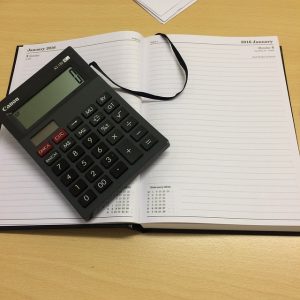Are you ready to dive deep into the world of cost estimation and learn how to develop accurate and reliable estimates for your projects? We’re going to break it down in a way that’s easy to understand and actionable. So, grab your favorite beverage, get comfy, and let’s embark on this journey together!
Understanding the Importance of Cost Estimation
Before we delve into the techniques, let’s take a moment to understand why cost estimation is so crucial, especially in the realm of government contracting. Cost estimation is the process of predicting the costs associated with completing a project, including labor, materials, equipment, overhead, and other expenses. Accurate cost estimation is essential for developing realistic budgets, submitting competitive proposals, and managing project finances effectively.
Government contracts often come with strict budget constraints and oversight requirements, making cost estimation even more critical. Contractors are required to develop accurate and defensible cost estimates to demonstrate their ability to perform the work within the specified budget and comply with contract terms and regulations.
Demystifying Cost Estimation Techniques
Now that we understand the importance of cost estimation, let’s demystify the techniques and explore what it takes to develop accurate and reliable estimates for government contracting projects:
Analogous Estimating: Analogous estimating is a top-down approach that relies on historical data and past experiences to estimate project costs. This technique involves identifying similar projects completed in the past and using their actual costs as a basis for estimating the costs of the current project. Analogous estimating is quick and straightforward but may lack accuracy if there are significant differences between the current project and historical projects.
Parametric Estimating: Parametric estimating is a mathematical technique that uses statistical relationships and mathematical models to estimate project costs based on specific parameters or variables. This technique involves identifying cost drivers or factors that influence project costs and developing mathematical formulas or algorithms to calculate the estimated costs based on these factors. Parametric estimating is more accurate than analogous estimating but requires access to reliable historical data and a thorough understanding of the cost drivers.
Bottom-Up Estimating: Bottom-up estimating is a detailed approach that involves estimating the costs of individual project components or work packages and aggregating them to develop the total project cost. This technique requires breaking down the project scope into smaller, more manageable tasks and estimating the costs of each task based on the resources required, such as labor, materials, and equipment. Bottom-up estimating is time-consuming but provides the most accurate and detailed cost estimates.
Three-Point Estimating: Three-point estimating is a probabilistic technique that accounts for uncertainty and variability in project costs by using three estimates: optimistic, pessimistic, and most likely. This technique involves developing three estimates for each project component or work package and calculating the average or weighted average of the three estimates to determine the overall project cost. Three-point estimating provides a range of possible cost outcomes and helps identify and manage risks effectively.
Expert Judgment: Expert judgment is a qualitative technique that relies on the expertise and judgment of experienced professionals to estimate project costs. This technique involves consulting with subject matter experts, project managers, or other knowledgeable individuals to gather insights, opinions, and assessments of project costs based on their expertise and experience. Expert judgment is subjective but can provide valuable insights and perspectives that complement other estimation techniques.
Vendor Quotes and Market Research: Vendor quotes and market research involve obtaining quotes or estimates from suppliers, subcontractors, or vendors for goods, services, or materials required for the project. This technique involves researching market prices, obtaining competitive bids, and negotiating favorable terms to obtain the best value for the project. Vendor quotes and market research provide real-world cost data and can help validate other estimation techniques.
Reserve Analysis: Reserve analysis is a technique that involves allocating contingency reserves or allowances to account for uncertainties and risks in project costs. This technique involves identifying potential risks and uncertainties that could impact project costs, such as changes in scope, schedule delays, or unexpected events, and allocating contingency reserves to mitigate these risks. Reserve analysis helps ensure that project budgets are robust and can withstand unforeseen challenges.

Putting Cost Estimation Techniques into Action
Now that we’ve demystified cost estimation techniques, let’s put them into action:
Analogous Estimating: Use historical data and past experiences to develop quick and high-level estimates for similar projects.
Parametric Estimating: Use statistical models and mathematical formulas to calculate project costs based on specific parameters or variables.
Bottom-Up Estimating: Break down the project scope into smaller tasks and estimate the costs of each task based on resource requirements.
Three-Point Estimating: Develop optimistic, pessimistic, and most likely estimates for project components and calculate the average or weighted average to determine the overall project cost.
Expert Judgment: Consult with subject matter experts and experienced professionals to gather insights and assessments of project costs based on their expertise.
Vendor Quotes and Market Research: Obtain quotes from suppliers and vendors and conduct market research to gather real-world cost data and validate other estimation techniques. Reserve
Analysis: Allocate contingency reserves to account for uncertainties and risks in project costs and ensure that project budgets are robust and resilient.
By mastering these techniques and considerations, you can develop accurate and reliable cost estimates that support successful project outcomes and compliance with contract terms and regulations.
